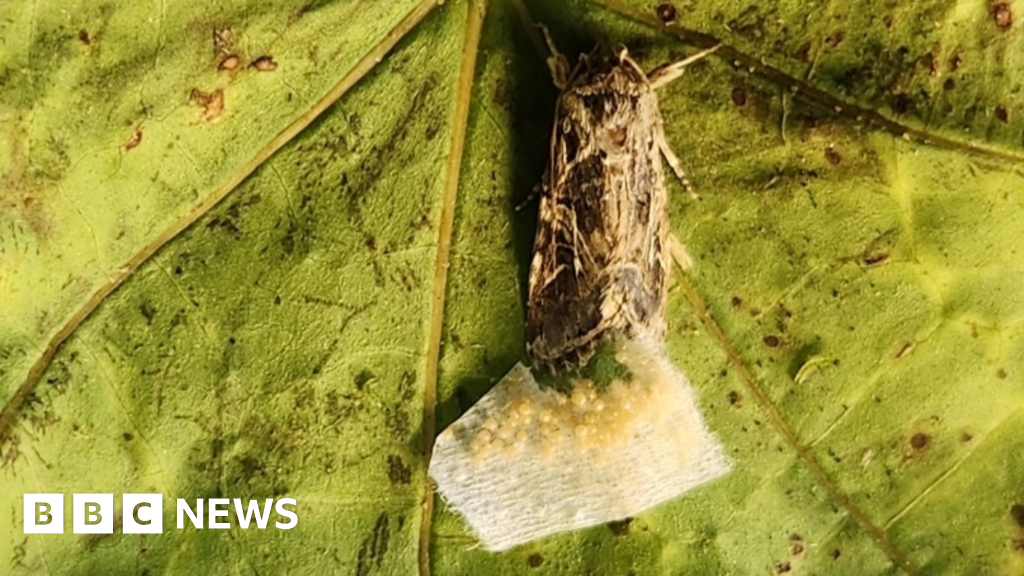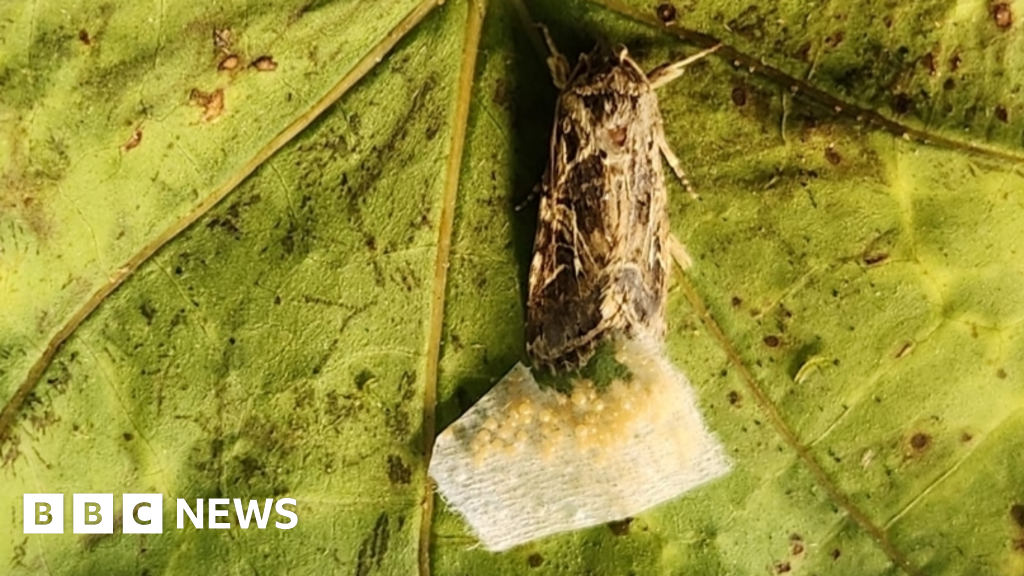Science
Neutrinos Uncovered: New Study Reveals Their Role in Star Collapse

Research from the University of California – San Diego has unveiled new insights into the behavior of neutrinos during the collapse of massive stars. The study suggests that these elusive particles may engage in previously unrecognized interactions, significantly influencing the outcomes of stellar explosions.
Neutrinos, often described as “cosmic tricksters,” are fundamental particles that come in three varieties: electron, muon, and tau. Despite their prevalence in the universe, much about their interactions remains enigmatic. Traditionally, it has been challenging to observe neutrinos interacting with one another, complicating efforts to understand whether they follow the standard model of particle physics or if they possess hidden interaction mechanisms.
Through theoretical calculations, the team from the Network for Neutrinos, Nuclear Astrophysics, and Symmetries (N3AS) has proposed that collapsing massive stars can act as a natural “neutrino collider.” As these stars undergo collapse, they lose thermal energy, prompting their electrons to accelerate close to the speed of light. This instability can lead to a dramatic transformation of the star.
New Insights into Stellar Collapse
The findings, published in Physical Review Letters, indicate that as stellar density increases during collapse, neutrinos become trapped and may collide with one another. If neutrinos interact exclusively through the standard model, the resulting particles will predominantly be electron-flavored, and the collapsed star is likely to leave behind a neutron star remnant.
In contrast, if these particles engage in secret interactions that alter their flavor, the scenario changes significantly. The study illustrates that such interactions could produce a diverse array of neutrino flavors, resulting in a “hot” neutron core that may ultimately form a black hole.
The research was led by a team including Anna M. Suliga, Julien Froustey, Lukáš Gráf, Kyle Kehrer, and George Fuller, alongside collaborators from various institutions. Their work opens new pathways for understanding the role of neutrinos in cosmic events.
Future Research Directions
The implications of these findings extend to upcoming experiments and observations. The Fermi National Accelerator Lab’s Deep Underground Neutrino Experiment (DUNE) is poised to explore these concepts further. Additionally, future studies of neutrinos and gravitational waves generated by collapsing stars could provide further evidence to support or refute these theories.
The research highlights the complex interplay of fundamental particles and astrophysical phenomena, illustrating how neutrinos, despite their elusive nature, can play a crucial role in shaping the fate of massive stars. By expanding our understanding of these interactions, scientists hope to unlock deeper insights into the workings of the universe.
For more information, refer to the original study by Anna M. Suliga et al., titled “Nonconservation of Lepton Numbers in the Neutrino Sector Could Change the Prospects for Core Collapse Supernova Explosions,” published in Physical Review Letters on July 14, 2025.
Science
Staffordshire University Launches Cutting-Edge Esports Facilities

Staffordshire University has launched an innovative esports broadcasting course at its Stoke-on-Trent campus, establishing itself as the first higher-education institution in the UK to offer such a program. This initiative is part of a recent multimillion-pound expansion, which has resulted in the creation of a state-of-the-art esports arena, broadcast galleries, and a fully-equipped studio designed to meet the demands of the rapidly evolving esports industry.
The newly inaugurated facilities feature a 60-seater esports arena, two dedicated broadcast galleries, and a multifunctional studio. The design allows the operation of the galleries either in parallel, with one linked to the arena and the other to the studio, or as a single comprehensive production suite. This flexibility is crucial for the diverse range of activities the space is expected to accommodate.
To equip the broadcast facilities, Staffordshire University collaborated with UK-based integrator and supplier Digital Garage, which partnered with Audio-Technica for the audio components. The sound system includes eight channels of the Audio-Technica 3000 Series Digital wireless and two Allen & Heath Avantis digital mixers. The choice of equipment was influenced heavily by the need for operational flexibility, which was achieved through the integration of Dante-enabled solutions.
Innovative Design Meets Educational Needs
Tom Gill, the design manager at Digital Garage, emphasized the importance of versatility in the facility’s audio design. He stated, “We needed to design a very versatile space. We couldn’t have one piece of audio kit connected to a single other piece of kit – everything needed to be able to ‘dial in’ to any input or output across the facility. So it was fundamental to the project to have Dante at the core of the audio design.”
The collaborative effort has resulted in an audio setup that not only meets educational needs but also mirrors professional standards in the esports broadcasting industry. The Avantis mixers were selected for their broadcast-friendly features, which include tie-lines that are often lacking in standard equipment. This capability allows each console to function independently, enhancing workflow and efficiency.
Gill added, “Presenters generally use handheld microphones in the arena, and because capsules on the 3000 Series transmitters are interchangeable, we could specify the C6100 hypercardioid option to avoid picking up unwanted spill from the PA.” The thoughtful selection of equipment ensures that students gain hands-on experience with tools they will encounter in their future careers.
Preparing Students for Future Careers
The emphasis on practical training is echoed by Richard Mortimer, the university’s technical services manager. He remarked, “Our students need to be industry ready, particularly in a fast-moving industry like esports broadcasting. So we’re not just bringing in technical kit for the sake of it. We’ve invested in equipment that our students will experience in the world of work, ensuring that they’re immediately employable post-university.”
In addition to the Avantis consoles, the facilities are equipped with a range of supplementary Allen & Heath components, including three DT168 Dante-enabled 16-input/eight-output expanders and two SQ-5 48-channel digital mixers. Control over the studio and other areas is further enhanced by six IP1 rotary and an IP8 8-fader controller, creating an integrated environment for students to learn and grow.
The investment in these advanced facilities reflects Staffordshire University’s commitment to providing its students with the skills necessary to excel in a competitive job market. As esports continues to grow globally, institutions like Staffordshire are paving the way for the next generation of industry professionals, ensuring they graduate with the experience and expertise required to thrive in this dynamic field.
Science
Idaho’s Mussel Eradication Plan Risks Killing Native Species

Efforts to eradicate invasive mussels in Idaho’s Snake River may inadvertently threaten native animal species. A recent study published in Environmental Toxicology and Chemistry highlights the potential ecological fallout from the state’s decision to treat the river with a copper-based molluscicide. This action comes in response to the detection of larval and adult quagga mussels near Twin Falls, marking the first occurrence of these invasive species in the Columbia River Basin.
Dreissenid mussels, which include zebra and quagga mussels, have wreaked havoc on freshwater ecosystems since their introduction to the United States in the late 1980s. Initially discovered in the Great Lakes, these invasive mollusks have spread throughout eastern and central U.S. waters, causing significant ecological and economic damage. The costs of managing their impact from 1989 to 2004 were estimated at $267 million for water treatment and electrical plants.
In a bid to prevent further spread, Idaho’s eradication plan involved the application of approximately 46,000 gallons of a copper-based molluscicide, containing 28.2% copper ethanolamine and 9.1% metallic copper, over a period of ten days. While such treatments are common in smaller bodies of water, their use in large rivers raises concerns about unintended consequences.
Research Findings on Ecological Impact
Researchers assessed the effects of this copper treatment on the benthic community in the Snake River. They collected water samples from seven locations throughout the treatment period. The findings revealed that nearly half of the original copper mass dissipated by the end of the observation period. However, dissolved copper levels remained above toxic thresholds for over two weeks after the treatment commenced.
The study found a drastic decline in animal abundance, with reductions ranging from 54% to 94% at the monitored sites. Various species, such as water nymph worms, flatworms, midge flies, freshwater shrimp, and pebblesnails, experienced significant population drops. Alarmingly, some species, including the New Zealand mud snail, the gyro snail, and the tadpole snail, vanished entirely from the river.
While a few new organisms appeared post-treatment, such as sludge worms and seed shrimp, the overall shift in animal diversity poses serious risks. The copper’s effects extended almost 40 miles downstream, potentially impacting federally protected species in the region, including various threatened and endangered fish.
The implications of this research are crucial for decision-makers. The decline in native animal populations could disrupt food chains and habitats, threatening the ecological balance in the Snake River and surrounding areas. As Idaho continues to grapple with invasive species management, the findings of this study underscore the need for a careful assessment of the ecological impacts of eradication efforts.
For more details, refer to the study titled “Fate and effects to the benthic community of a copper treatment to eradicate invasive mussels in a large western river, USA,” published in Environmental Toxicology and Chemistry in March 2025.
Science
Animals Respond to Plant Sounds, Revealing Hidden Ecosystems

New research from Tel Aviv University has unveiled that animals, specifically female moths, react to sounds produced by plants, suggesting an intricate and previously hidden ecosystem between flora and fauna. This groundbreaking study indicates that moths avoid laying their eggs on tomato plants emitting distress signals, which may indicate the plants are unhealthy.
In a series of carefully controlled experiments, the research team demonstrated that these sounds, which fall outside the human hearing range, can be perceived by various insects, bats, and some mammals. The findings, published in the journal eLife, align with earlier research that established plants emit sounds when they are under stress or in distress.
Professor Yossi Yovel, a leading researcher on the project, stated, “This is the first demonstration ever of an animal responding to sounds produced by a plant.” He noted that while this discovery is still speculative, it opens up numerous possibilities. Animals may make crucial decisions based on plant sounds, affecting behaviors such as whether to pollinate, seek shelter, or even consume them.
The study specifically focused on the behavior of female moths, which typically lay their eggs on tomato plants, providing a food source for their larvae upon hatching. The researchers aimed to determine whether the moths would heed a plant’s distress signals, ultimately finding that they chose not to lay eggs on stressed plants.
Exploring the Communication Between Species
The research team is now poised to investigate the various sounds different plants produce and whether other species respond to these auditory cues. Professor Lilach Hadany, another researcher involved in the study, highlighted the potential for plants to communicate distress signals to one another. She explained, “If a plant is stressed, the organism most concerned about it is other plants, and they can respond in many ways.”
While the study reveals the significance of sound in the plant-animal interaction, the researchers emphasize that plants are not sentient beings. The sounds they produce result from physical changes in their environment rather than conscious communication. Nevertheless, the implications of this research suggest that both plants and animals may have evolved to utilize these sounds for mutual benefits.
According to Professor Hadany, “Plants could evolve to make more sounds or louder ones if they were of benefit to it, and the hearing of animals may evolve accordingly so they can take in this huge amount of information.” She described the research area as “a vast, unexplored field—an entire world waiting to be discovered.”
This exploration of the relationship between plants and animals highlights a complex web of interactions that could reshape our understanding of ecosystems. As scientists continue to delve into these findings, the impact on agriculture, conservation, and ecological studies may be profound.
The potential for animals to respond to plant sounds opens the door to a myriad of questions about the intricate connections sustaining life on Earth. Future research will likely uncover more about how these interactions play out in natural settings and their implications for biodiversity and ecosystem health.
Science
Animals Respond to Plant Sounds, Revealing Hidden Ecosystem

Research from **Tel Aviv University** has unveiled that animals, specifically female moths, respond to sounds made by plants, indicating a previously unknown level of interaction between these organisms. The study highlights how these moths avoid laying their eggs on tomato plants that emit distress signals, potentially linked to the plants’ health.
This groundbreaking research, published in the journal **eLife** in March 2024, builds on previous findings by the same team, which demonstrated that plants produce sounds when they are under stress. These sounds, although inaudible to humans, can be detected by various species, including insects, bats, and some mammals.
Prof Yossi Yovel, a key researcher in this study, stated, “This is the first demonstration ever of an animal responding to sounds produced by a plant.” He emphasized that while this is still speculative, it suggests that animals might make crucial decisions based on the auditory signals from plants, such as choosing whether to pollinate or seek shelter.
Experiment Details and Findings
In a series of meticulously controlled experiments, the researchers ensured that the moths’ responses were strictly due to the sounds and not the visual characteristics of the plants. The findings revealed that when tomato plants emitted sounds indicative of distress, the moths refrained from laying their eggs, which they typically do on healthy plants.
The team is now poised to explore the sounds produced by various plant species and whether other animals also react to these auditory cues, potentially informing their behaviors regarding feeding, pollination, or habitat selection.
Prof Yovel further noted, “You can think that there could be many complicated interactions, and this is the first step.” This line of inquiry opens the door to understanding the complex relationships within ecosystems.
Implications for Plant Communication
Another intriguing aspect of the study involves the potential for plants to communicate with each other through sound. According to **Prof Lilach Hadany**, also from Tel Aviv University, this raises exciting questions about how plants might respond to stress signals from their counterparts, particularly in adverse conditions like drought.
“If a plant is stressed, the organism most concerned about it is other plants,” she explained in a statement. “They can respond in many ways.” While the researchers clarify that plants are not sentient beings, the sounds they produce are a result of physical changes in their environment.
The implications of this research suggest that if plants and animals can indeed communicate through sound, it could signify a co-evolutionary process where plants adapt to produce beneficial sounds while animals evolve to interpret these signals effectively. Prof Hadany remarked, “This is a vast, unexplored field—an entire world waiting to be discovered.”
This study marks a significant advancement in our understanding of ecological interactions. As scientists continue to investigate these phenomena, the intricate web of life that connects animals and plants may become clearer, revealing how they depend on one another in ways previously unrecognized.
-

 Sports24 hours ago
Sports24 hours agoSheffield United’s Young Talent Embraces Championship Opportunity
-

 Health1 day ago
Health1 day agoAI Tool EAGLE Streamlines Lung Cancer Mutation Detection
-

 Business22 hours ago
Business22 hours agoNew Study Links Economic Inequality to Lower Well-Being Globally
-

 Business23 hours ago
Business23 hours agoTrump’s “One Big Beautiful Bill” Faces Economic Scrutiny
-

 Sports23 hours ago
Sports23 hours agoEverton Pursues Johan Bakayoko as Transfer Deadline Approaches
-

 Top Stories22 hours ago
Top Stories22 hours agoAustralian Man Arrested for Alleged Damage to Stone of Destiny
-

 Top Stories21 hours ago
Top Stories21 hours agoBoeing 787 Returns to London After Short Flight to Bogotá
-

 Top Stories19 hours ago
Top Stories19 hours agoProtests Erupt in Niksic as Officials Celebrate Controversial Events
-

 Politics23 hours ago
Politics23 hours agoUncertain Future for The Royal Albert Pub as Landlord Departs
-

 Science22 hours ago
Science22 hours agoStudy Reveals Widespread Flooding in North Carolina Exceeds Expectations
-

 Top Stories23 hours ago
Top Stories23 hours agoAtakule Tower Illuminated in Montenegro’s Colors for National Day
-

 Sports22 hours ago
Sports22 hours agoLiverpool Prepares for Transfer Windfall Amid Premier League Interest











